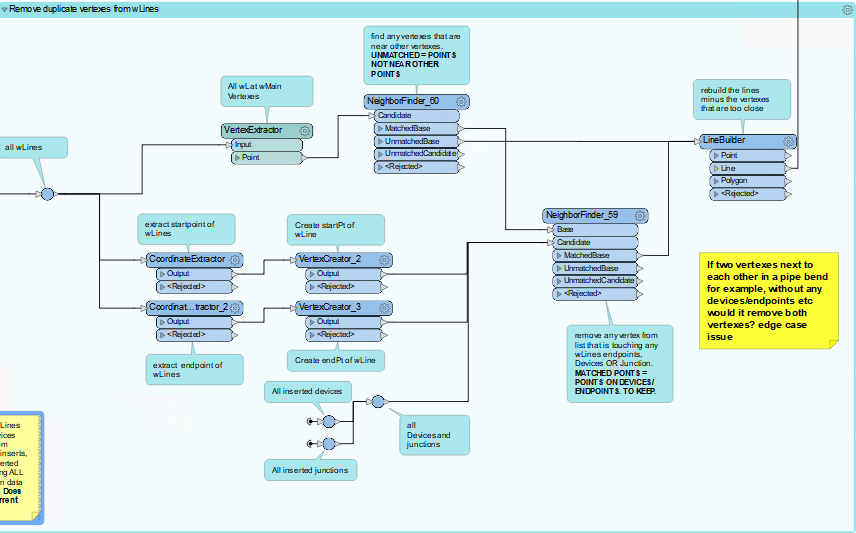Hello,
See picture below for example, I wish to remove the green vertex while ensuring that the end point vertexes remain.
I need to remove these as they are treated as being stacked, which is causing major issues with my ESRI Utility Network Model.
These points are within < 0.001m of each other.
I have tried using a generalizer, which is not appropriate for this situation, as the lines become much too generalised. I wish to only remove these vertexes that are treated as being stacked upon each other.
I have also tried using the geometryValidator -> issue to detect: remove consecutive points without success.
What other ways can I remove these points? I have thought about creating a custom set of transformers that could do the job, i.e. Find all vertexes -> identify any vertexes that are connected to other Line st/end points or any devices (as I want to keep these) -> find vertexes that are within 0.001m of each other -> single match these -> output. Although with this custom method I have no clue how to re-feed in the vertexes into the lines to update them.
Any help would be appreciated.
Thanks










